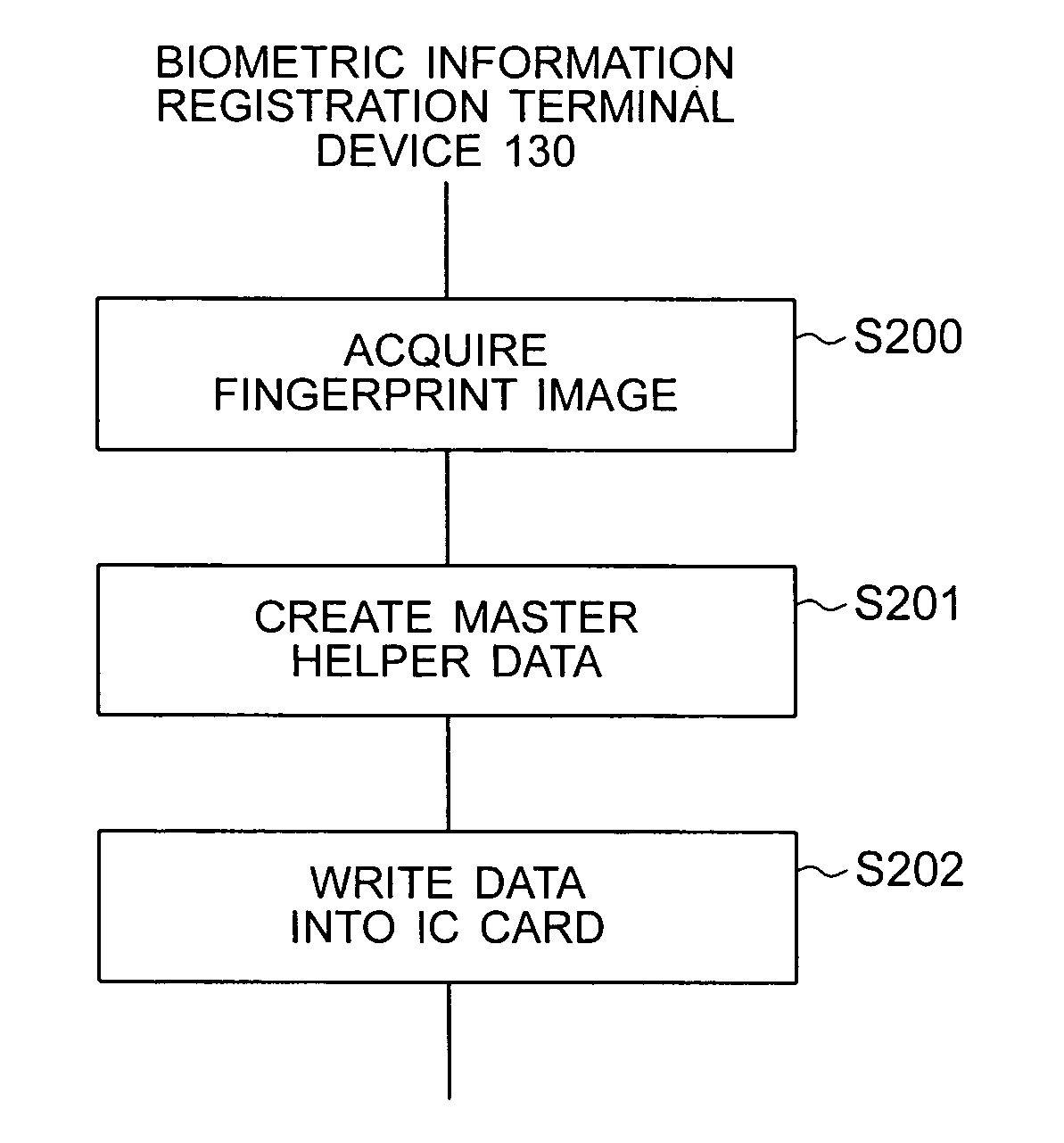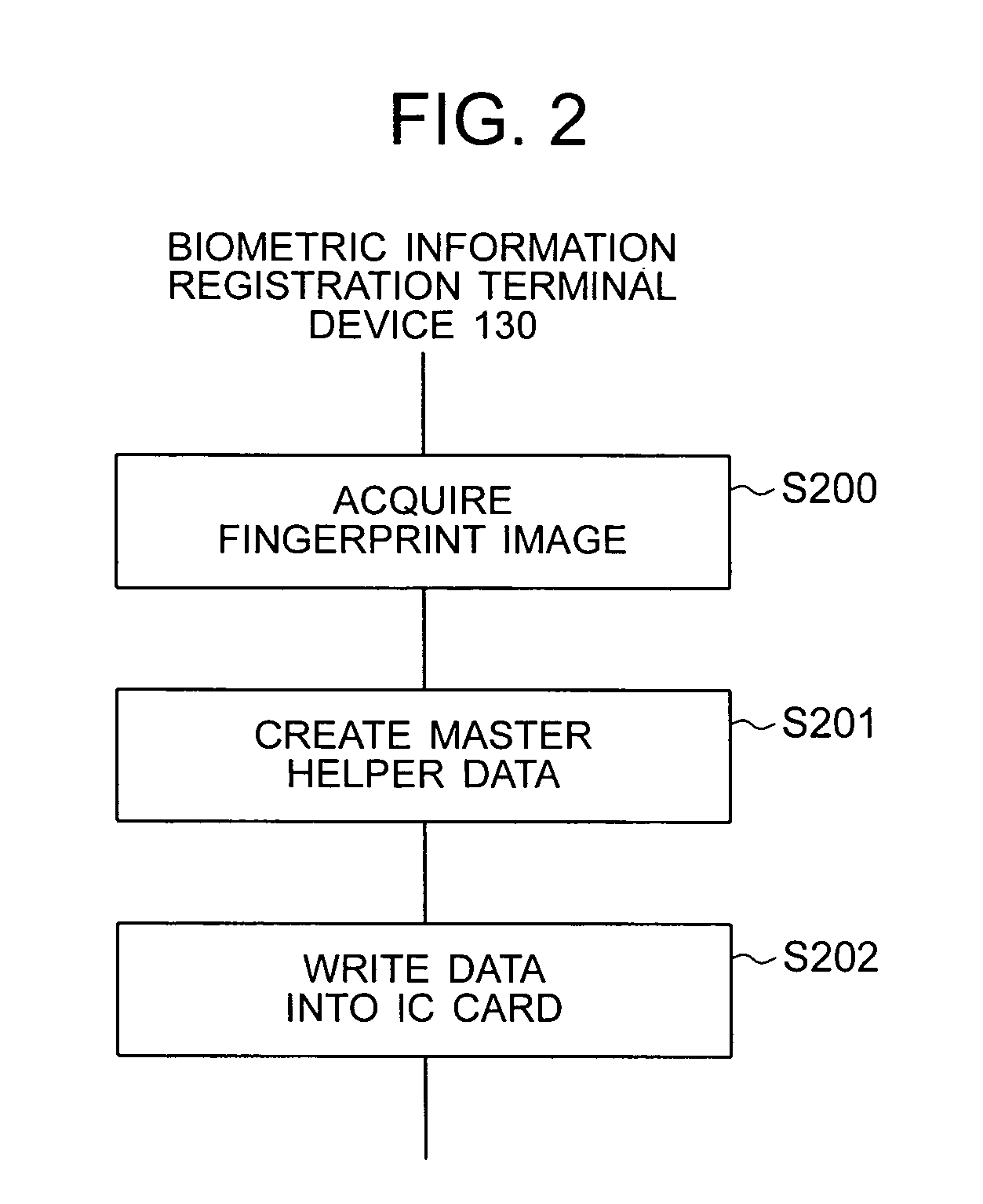Processing device, helper data generating device, terminal device, authentication device and biometrics authentication system
a technology of authentication device and authentication code, which is applied in the field of authentication device and biometric authentication system, can solve the problems of unauthorized users impersonating legitimate users, generating management cost problems, and user inconvenience, so as to reduce operation code and user load, prevent impersonation, and reduce operation cost
- Summary
- Abstract
- Description
- Claims
- Application Information
AI Technical Summary
Benefits of technology
Problems solved by technology
Method used
Image
Examples
first embodiment
[0028] The following describes a first embodiment of the present invention using an example of a server / client type biometric authentication system that can register and authenticate a biometric-information-based password for multiple networked service applications.
[0029]FIG. 1 is a diagram showing the configuration of a system in this embodiment. A biometric authentication system in this embodiment comprises an authentication terminal device 100 by which the user is authenticated when the user receives services via a network; an IC card 120 issued to the user; a biometric information registration terminal device 130 used to register master helper data into an IC card; an authentication server 140 used by a service application to authenticate the user; and a network 150. The authentication terminal device 100, which may also be a user's PC, a mobile phone, or a PDA, is connected to the authentication server 140 via the network 150. The biometric information registration terminal de...
second embodiment
[0083] A second embodiment of the present invention will be described below using, as an example, a server / client type biometric authentication system that can perform biometric based challenge-response authentication when multiple networked service applications check the authenticity of a user via an authentication terminal device. In this embodiment, the public key infrastructure (PKI) and the biometric authentication technology are unified to allow the user to prove authenticity without performing the procedure, such as password registration, for the server in advance. In the standard PKI-based user authentication, the server verifies the authenticity of a user certificate (including public key), sent from a client, and uses a challenge-response mechanism to confirm that the client has the private key corresponding to the certificate. By doing so, the server can check the authenticity of the user without registering the authentication information (password, etc.) in advance. Howe...
third embodiment
[0115] Next, a third embodiment of the present invention will be described using a service providing terminal device, such as an ATM, as an example wherein the terminal device uses an IC card and biometric information to authenticate a user. Conventionally, an in-card biometric comparison technology has been proposed for increasing security and privacy protection; according to this technology, user's registered biometric information is recorded in an IC card in advance and the user's biometric information acquired on the terminal device side at authentication time is sent to the IC card for comparison with the registered biometric information in the IC card to determine if the user is authentic. The problem with this technology is that, in most cases, the comparison processing of the biometric information requires the amount of calculation that is too large to attain sufficient authentication accuracy within a short processing time. This embodiment performs master helper data conver...
PUM
 Login to View More
Login to View More Abstract
Description
Claims
Application Information
 Login to View More
Login to View More - R&D
- Intellectual Property
- Life Sciences
- Materials
- Tech Scout
- Unparalleled Data Quality
- Higher Quality Content
- 60% Fewer Hallucinations
Browse by: Latest US Patents, China's latest patents, Technical Efficacy Thesaurus, Application Domain, Technology Topic, Popular Technical Reports.
© 2025 PatSnap. All rights reserved.Legal|Privacy policy|Modern Slavery Act Transparency Statement|Sitemap|About US| Contact US: help@patsnap.com



